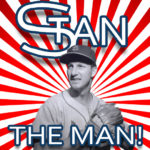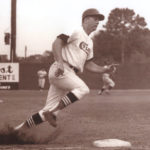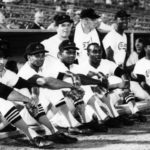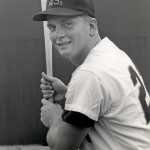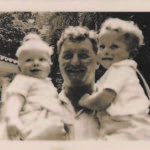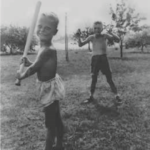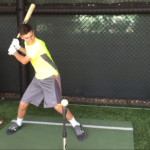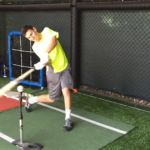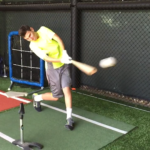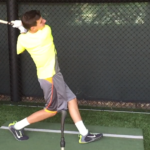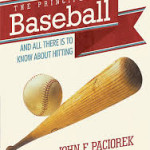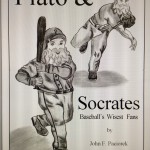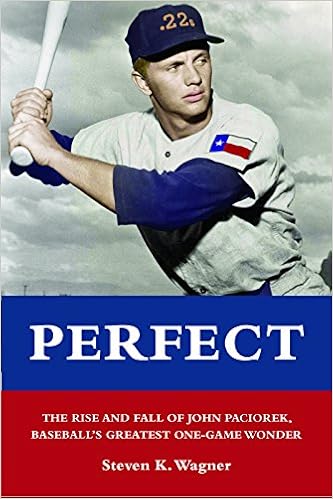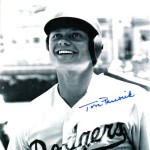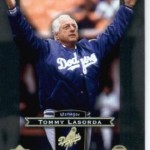CHAPTER 3
Circuitous Path to Glory
In 1963, the Houston Colt .45s were a second-year expansion club whose management expended a lot of energy, time, and money developing its youth. The Organization’s future success lay in quickly promoting the young “phenoms” thriving in the minors, while gradually weeding out veteran players whose value was waning. Management wanted to use the final games of the season to showcase a group of talented young athletes that would excite the hometown fans with the prospect of future prominence. The end of the season also was an opportunity for big-league teams to expand their rosters. So during the last few weeks of September, the Colt .45s arranged an assortment of mixed lineups comprised of veterans and rookies, to see what athletic chemistry might work best in the quest to become great.
On September 27, the Colt .45s experimented by fielding an all-rookie team in a game against the New York Mets. Although the lineup included some outstanding athletes and future major-leaguers like Brock Davis, Aaron Pointer, Sonny Jackson, Jerry Grote, John Bateman, Joe Morgan, Jimmy Wynn, Rusty Staub, and Glenn Vaughn—the aspiring Colt .45s lost 10–3, and the Mets’ season victory total rose to 51. 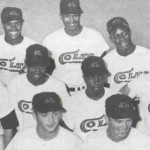
The following day, Manager Harry Craft decided to start five rookies and four veterans against the Mets. The Colt .45s won the game by a score of 9–1, raising the Mets’ losses to 110 for the season.
Since the Colt .45s’ record against the Mets at this point of the season was 12 and 5, Craft certainly didn’t want his team to lose the final game of the season and leave the fans discontented. But General Manager Paul Richards was still intent on showcasing the team’s best prospects for the coming years. The decision was made to field a starting team for the third and final day that was composed of seven or eight rookies led by a nucleus of two veterans. This seemed a practical formula for a successful game.
With nothing of real substance on the line, management needed to convince the fan base that these erstwhile “bonus-babies” were truly worth the investment and that they were likely to ensure the city’s future prominence in the sports world. (In 1963, the city’s only athletic venues were located at Rice University, University of Houston, Texas Southern University, and the Houston Oilers, so football was the only major sport represented on the national level . . . and dubiously at best.)
Paul Richards 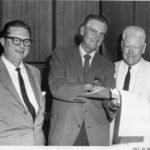 , a well-regarded baseball aficionado, was determined that Houston would be a grand major-league city, even though the sweltering heat and humidity, monster mosquitoes, and other nocturnal varmints did nothing to enhance the prospect of attending baseball games. With the completion of the revolutionary, climate-controlled “domed stadium” still two years away, officials needed to enthuse a starving, mildly interested, and mosquito-bitten fan base by exhibiting a new storehouse of talent and well-played games that would serve as a strong indication of good things to come. The fans needed to be persuaded that they were supporting a potential pennant-contending team.
, a well-regarded baseball aficionado, was determined that Houston would be a grand major-league city, even though the sweltering heat and humidity, monster mosquitoes, and other nocturnal varmints did nothing to enhance the prospect of attending baseball games. With the completion of the revolutionary, climate-controlled “domed stadium” still two years away, officials needed to enthuse a starving, mildly interested, and mosquito-bitten fan base by exhibiting a new storehouse of talent and well-played games that would serve as a strong indication of good things to come. The fans needed to be persuaded that they were supporting a potential pennant-contending team.
With that idea firmly in place, the only thing to decide was the starting lineup for the final game of the 1963 season. Most of the positions were decided early: 
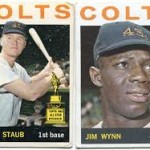
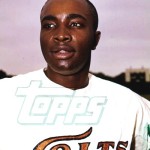
• Chris Zachary, a nineteen-year-old who had been with the club for part of the season, was a respectable candidate for pitcher.
• Glen Vaughn would again play shortstop.
• Joe Morgan would play second base.
• Jimmy Wynn, who went 2 for 4 with two RBI in the previous game, would play left field.
• Rusty Staub, who went 3 for 4 in the previous game, would play first base.
• Bob Aspromonte, resident handsome dude and veteran third baseman, would play his usual position.
• Ivan Murrel, a nineteen-year-old Panamanian rookie, would play center field.
• John Bateman, a twenty-two-year-old rookie, would play catcher as he had all season.
With most assignments now in place, the only question not yet resolved was whether or not eighteen-year-old Johnny “Nature Boy” Paciorek would be able to play. He was in Houston primarily for doctors to evaluate and decide if he needed surgery for a recurring back problem.  Johnny was an apparently excellent physical specimen, whose determination and dedication to every superficial aspect of the “game” was well documented by everyone who was familiar with his work ethic, skill, and potential. His was an unflappable desire to be the best that he could be.
Johnny was an apparently excellent physical specimen, whose determination and dedication to every superficial aspect of the “game” was well documented by everyone who was familiar with his work ethic, skill, and potential. His was an unflappable desire to be the best that he could be.
Precursor:
Johnny stood at six feet two inches tall, weighed a constant 210 pounds of solid muscle, and was an energetic nuisance to the sight of anyone who didn’t want or need to regulate his life to the continuous regimen of exercise. He seemed to be driven by an insatiable desire to be the best at every aspect of the game (any game). His inordinate exercise rituals made it obvious he wanted to be stronger and faster than everyone, throw and hit a ball farther and harder than anyone, and most importantly, give the impression that he could and should be able to do all those things.
Johnny signed for (what he considered) a modest “bonus” in mid-August of 1962, at seventeen years of age. He graduated from Saint Ladislaus High School in June but couldn’t sign until August 15 because of some technicality, which he never fully understood. He was expecting to command a larger bonus than he would receive in August.
In June, he was in top physical shape and had performed extremely well as a senior during the high school baseball season. But because he couldn’t sign in June, he’d have to wait two months—a period during which he’d be playing in a high-quality summer baseball league. There all big-league scouts would have additional time to evaluate their main prospects.
Johnny was primed and ready to put his best foot forward. He fully expected to show everyone why he deserved the highest consideration for monetary dispensations. But fate and an extremely poor decision conspired to arrive in his life at the same moment. While waiting to sign a contract, an incident occurred that would have grave consequences.
Because of Johnny’s inexhaustible energy and lusty workout ethic, combined with a narcissistic urge to display his all-around athletic abilities, he couldn’t refuse the challenge of participating informally in an outdoor summer basketball league. With locally talented high school and college players strutting their stuff on many of the prominent Detroit courts, Johnny wanted to show off his ability with the big round-ball.
Johnny could run and jump well. He played staunch defense and “skied” for rebounds or “boxed out” larger opponents. On offense, he dribbled well and drove to the basket with either hand, while exploding for a quick jumper, or going to the hoop for a right- or left-handed layup, or an occasional “slam.” He was working a good defender, right and left, found an open lane, and darted to the hoop. As he was about to plant his left foot for what he anticipated might be an impressive right-handed dunk, he stepped onto the foot of another defender. Rather than skyrocketing to the hoop, his plant foot buckled inwardly, his ankle abruptly and violently turned outwardly, and he plummeted to the hard concrete with a severely sprained ankle.
His good buddy “Krazy” Kraiza drove him home where he stayed for the next day and a half, icing and soaking his ankle in the hopes of being able to play in the baseball games that were scheduled for the following days. He managed to play but wasn’t very productive or impressive. He was adequate at shortstop but couldn’t get to balls he ordinarily could. His arm was always good, but he knew he was straining it since he couldn’t put full pressure on his front foot. But worst of all, he couldn’t hit—not for average and completely without power. Since it was difficult to press down on his front foot, he was swinging as if his (plant) foot was still in the air as he was turning his body and bat into the ball. Even when he did make contact, the ball was either a semi-pop-up to shortstop or second base or a slow grounder in the infield.
The scouts who were coming out to see him play were not impressed, and most stopped coming out. The only ones who continued to come out were from the Houston Colt .45s. That was probably only because Paul Richards had seen him play during his high school season. (Johnny could only imagine what the scouts were thinking about Mr. Richards’s ability to discern baseball talent.)
But as the weeks passed, his ankle was healing, and he began to look like his old self. A few of the other teams’ scouts came back, but his performances by that time were “too little, too late” to command the treasure he had been expecting just a couple of months earlier. Luckily, the Colt .45s were still willing to give him a handsome offer, even without any other teams competing for his service. He could assume his somewhat implied threat to play football at the University of Houston heightened their incentive. They paid him $45,000 to sign (plus college scholarship money), which was a substantial sum in 1962 but far beneath what he wanted or would have received had he not been so “stupid”!
* * *
When Paciorek decided to sign a professional baseball contract at age seventeen, he disappointed many college football coaches, including those at the Universities of Michigan, Nebraska, Alabama, Michigan State, and the University of Houston. Houston was in the process of going “big time,” hiring an imaginative, dynamic, and affable new coach out of Michigan State University named Bill Yeoman 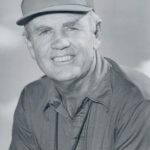 , who was an understudy to the legendary Duffy Daugherty.
, who was an understudy to the legendary Duffy Daugherty.
Both Daugherty and Yeoman were largely successful in their recruitment processes because of their witty and congenial dispositions. Yeoman probably didn’t know where he would use Paciorek on his team, but that didn’t stop him from proclaiming Johnny as his number one recruit. He could throw a football “a mile” (estimated at close to a hundred yards), was an accurate passer, and he could run with power as well as with quickness and surprising agility.
He was always the punter on his high school team. From his freshman year on, he could always be found walking through his house practicing a three-step rhythmand-kick of a punter. From the beginning, he would see how high he could quickly stretch and bring his straight right leg forward and up while extending a flattened foot to a height well above his head. By his senior year, he consistently punted the football sixty to seventy yards in the air. When his football coach knew of his imminent baseball signing, he told Johnny that in the baseball off-season he could probably make it as a punter for some pro football team. He kept that thought in the back of his mind, while daily continuing the punting exercise as part of his ritual.
* * *
Johnny was thrilled to begin the 1963 baseball season at spring training in Apache Junction, Arizona, which was the same field on which he had played during “winter ball” in the Arizona Instructional League during the preceding October and November months. Spring training in Apache Junction was reserved for major-league players and highly recommended prospects. Houston’s minor leaguers trained in Moultrie, Georgia, more than half a continent away.
Johnny was proud to be a member of that elite group of big leaguers. His physical stature, work ethic, and predisposed natural sense of belonging in that specific environment gave him an inherent, unofficial right to “be there!” And his performances both on defense and offense gave solid evidence to claim this right. His mind-set clearly communicated that he was not going to be intimidated by any situation, circumstance, or major-league pitcher. Consequently, he had one of the highest batting averages, was a stellar performer in the outfield (usually center field), and he displayed an uncanny knack for hustling to back up plays on the entire field by anticipating any possible scenario that could occur.
Therefore, it was with extreme disappointment and unconvincing compliance that he accepted the Organization’s plan to send him to the minor-league spring training facility in Georgia. It was explained to him as follows:
If he was one of the three rookie players who were mandated by the league to stay on the twenty-five-man roster, he, like the other two, would get very little playing time, and the year would be a virtual waste of valuable developmental experience. Apparently, they thought more highly of him than they did of the many other rookies and expected him to be back, in full bloom, before the end of the season. He couldn’t deny their logic, but he also knew that his natural defensiveness might not permit him to reap the intended rewards of such a patient, motivational strategy.
And just as his predetermined attitude had dictated, his experience in the minor-league setting was not very profitable. The facilities and field conditions were woefully inferior to those of which he had recently grown accustomed and entitled. Thus his motivation to excel was diminished. He didn’t realize that this quality differential was merely the nature of things in pro ball, so his new situation was quite a let-down. He felt as though he had left a luxurious silver-spoon environment of daily filet mignon and room service to be relegated to the dingy cloister of a canned soup kitchen and hot dog extravaganza with rank Army barrack accommodations. The irony that this setting was what he was accustomed to from birth (and from which he was desperate to disassociate himself) was completely lost on him.
Although it was difficult to adjust to the culture shock of his present circumstance, Johnny was determined to make the best of this bad situation. The close quarters in the locker room and dorm barracks should not have been so egregious since, being the oldest of eight kids in a small family house, Johnny was used to cramped facilities.
It was more a question of a lack of privacy amongst individuals of different nationalities, races, religious, and cultural backgrounds that made it difficult for him to adjust and trust. In his relatively short big-league experience, none of that really came into play (at least not apparently to his eyes).
Less than a month beyond his eighteenth birthday, Johnny was becoming conflicted by the subtle proclivities of human nature. Growing up in Detroit, in the relative sanctuary of his neighborhood environment, he was never aware of what would be considered racial bias, most likely because there were no black families living within a mile radius of his home. However, he could recall an undefined tension that seemed to arise whenever he or his brothers were cast into unfamiliar surroundings where races intermingled. But it always seemed temporary and never seemed to leave any emotional mark.
In winter ball (1962) and spring training in Apache Junction (1963), blacks and whites and Spanish, Mexican, South American players were seen by Johnny as nothing other than “ballplayers”—all having equal status except for their varying abilities to play the game. When Johnny left Arizona for Moultrie, Georgia, all the other rookies except three (Dave Adlesh, Brock Davis, and Chris Zachary) went with him. There were a handful of other white players and coaches, but the majority were black and dark- or light-skinned Hispanics. The group flew from Phoenix to Tallahassee, Florida. From there, the team traveled by bus to Moultrie, Georgia.
After a few hours of travel along the Florida and Georgia country roads, everyone was getting hungry and ready for a late lunch. The bus driver came across a friendly-looking roadside diner that looked like it could accommodate (and would appreciate the business of) a busload of hungry guys. The bus emptied, and the players entered the diner and settled down around tables placed on a sawdust floor.
As Johnny and those with him were greeted with a sunny Southern hospitality, he couldn’t help but notice that his dark-skinned teammates were being escorted out the back door. He got up from his chair to see where they were headed. He saw through a window that they apparently had to sit at outdoor tables behind the restaurant, where the trash and garbage cans were attracting lots of flies.
It took only an instant for a feeling of outrage and disgust to penetrate his psyche, and he immediately insisted that the entire team of players and coaches leave the diner and continue their trek to Moultrie. Although everyone was hungry (especially him, whose custom of five “squares” a day was already one in arrears), there was a complete show of solidarity as they returned to the bus and went on their way.
It took a little while, but the bus driver eventually found a roadside barbecue vendor whose service was available to anyone willing to eat at his comfortable display of outdoor tables. He appreciated the business, and the food was satisfying. But Johnny’s normally voracious appetite was tempered somewhat by the events earlier in the day and left him feeling emotionally drained.
He had seen in movies, and heard, of both the congeniality of Southern graciousness as well as the blatant intolerance and religious hypocrisy of a God-affirming Confederate mentality. But this experience was the first one where such belligerent, uncaring, inhumane behavior pierced his conscious sense of right and wrong.
What undefinable mechanism of mortal mentality is so depleted of common sense as to cause otherwise normal people to behave in a manner that is so drastic and inhumane? Johnny had heard of, and seen, pictures depicting “lynching,” which purportedly occurred in the deep South. Were Georgia and Florida considered to be “deep”?
What can I expect to see next? was a frightful query he did not even want to imagine!
But once the team arrived at the minor-league complex, a sense of normalcy returned to everyone. Although the living arrangement in the barracks seemed archaic, as well as eating arrangements for each meal being inadequate, at least the facilities seemed safe and useful. And besides, all they were expected to do was play baseball. What could be bad about that?
The complex was a series of moderately kept fields containing ninety-foot bases, pitchers’ mounds, dugouts, and a drinking fountain on each field. But even the main field where most games were played was surely a far cry from the first-class facility that Johnny had left behind. He longed for Apache Junction’s cushiony green infield and outfield, level areas where a ball could be fielded with a minimum of danger to life and limb. In Moultrie, there were not to be found drinking fountains or cooling containers of ice water in every dugout!
* * *
A glaring feature of the Moultrie home field facility that housed the Class D Colt 22s for the past few years in the Georgia–Florida League was the restroom and drinking fountain 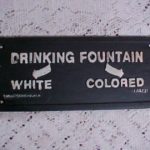
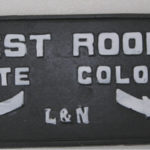 accommodations for the spectators who attended the games during the regular season and spring training. At first, Johnny didn’t know what to make of the practicality of having separate restrooms for black men and women andthose for white men and women. It sure looked to him as a waste of space. A big sign above the restroom doors and the water fountains spelled the words “Colored” or “White Only!” Everything looked identical, so he couldn’t even begin to think about why this was—except “dumb”! When no one else was around, he sneaked into the “colored” restroom and drank out of the “colored” water fountain. He couldn’t notice any difference and didn’t get sick from the water.
accommodations for the spectators who attended the games during the regular season and spring training. At first, Johnny didn’t know what to make of the practicality of having separate restrooms for black men and women andthose for white men and women. It sure looked to him as a waste of space. A big sign above the restroom doors and the water fountains spelled the words “Colored” or “White Only!” Everything looked identical, so he couldn’t even begin to think about why this was—except “dumb”! When no one else was around, he sneaked into the “colored” restroom and drank out of the “colored” water fountain. He couldn’t notice any difference and didn’t get sick from the water.
What kind of a mind would think up something like this? he thought to himself. And how come we can go to the same bathrooms and drink from the same fountain at our practice fields? his mind pondered. He hadn’t experienced this kind of segregation in Houston or in Arizona. Who’d want to make his home in the deep South, especially if he were Negro? was his last thought on the subject—for the time being.
* * *
Most importantly for batters, on all the practice fields, there were no large green or dark-colored backgrounds in each center field that allowed hitters to clearly see a pitched ball with no visual obstruction or glare.
Not here, in Moultrie! No legitimate background for batters to confidently take batting practice or participate in intra-squad games. No smooth green grass, just uneven patchy weeds. No view of home plate from center field. No way to practically apply his patented fast-moving “charge-scoop-throw” technique for fielding ground balls in the outfield. (After turning “pro,” coaches asked him if he wanted to continue in the infield [shortstop] or be an outfielder. His favorite players were Mickey Mantle and Willie Mays, so he told them he preferred to play center field.)
One of the first things he asked was for someone to hit him some “fungoes,” while he tried to master all the outfield positions. But after only one session of live batting practice with raw, young, and wild minor-league pitchers, on a field with no “background,” he decided to relegate himself to the batting cages and the “iron mike” auto pitcher that threw strikes. He thought to himself, There’s no way I’m jeopardizing my big-league career under that kind of circumstance. (In his youth, he had heard about a few outstanding prospects for the big leagues who suddenly vanished into oblivion after being struck in the head by a pitched ball. Those circumstances never hampered him before, but now there seemed to be something more tangible at stake here.)
Sometimes there were situations where the coaches insisted that Johnny bat against live pitchers. When that occurred, it was likely to see him “bailing out” on just about every pitch and hardly ever making good contact with his bat. When he played in games on the one “good field,” he was always markedly better and more confident. Still, his main thought was always to preserve himself for the major-league club.
What am I doing in the minor leagues? he would lament. I want to be like Al Kaline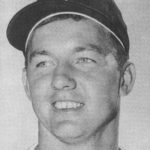 , who never played a game in the minors when he began his career with my hometown Detroit Tigers, at age eighteen. I remember shaking Al’s hand when I was fourteen years old . . . My story is supposed to be like his!
, who never played a game in the minors when he began his career with my hometown Detroit Tigers, at age eighteen. I remember shaking Al’s hand when I was fourteen years old . . . My story is supposed to be like his!
His dad had told him that one of the most important and impressive attributes of a star athlete was his strong hands. Johnny’s hands were big and strong from all the hand exercises he did since early childhood. Dad said that scrubbing pots, pans, and floors was the best—so when he shook hands with Kaline and Norm Cash, their hands were smaller than his and their grips were as if they were putty in his own.
As he went through the daily regimen that was required for all minor leaguers, Johnny—despite being the most prominent and potentially prosperous-looking athlete at the complex—could not help but admire and appreciate the athletic abilities of all the prospects at the camp. (Just as he had done when he was younger—if someone seemed to be better than he was, Johnny would take note of any peculiar characteristic that would generate that particular prowess and then practice continuously to duplicate or even improve upon it.) Although his position would probably always be in the outfield, he would still have coaches hit him grounders at all the infield positions so that they would be reminded of who was still the “best-looking” fielder at those positions.
One specific individual whom Johnny took a fond interest in watching was probably the smallest player at the complex (and possibly in the entire Organization). 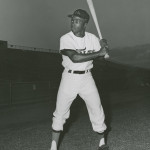 Joe Morgan was unimpressive-looking at first glance, especially looking at him in the practice uniform he was given to wear. (All players in the minor-league camp were provided with old “hand-me-down” uniforms that were originally used by big-league players three years earlier.)
Joe Morgan was unimpressive-looking at first glance, especially looking at him in the practice uniform he was given to wear. (All players in the minor-league camp were provided with old “hand-me-down” uniforms that were originally used by big-league players three years earlier.)
The uniform they gave to Joe was probably the same size they gave to Johnny. But as could be imagined, it may have looked a little differently on Joe’s five-footsix, 130-pound frame. The first couple of days, Johnny would silently chuckle to himself (as probably would other players as well) at the sight of Joe walking from the “clubhouse” to the baseball fields. The pants were not only baggy but long. It looked as if the waist was first lifted up then rolled down and finally wrapped around his waistline.
All the players were given what were obviously short-sleeved (flannel or woolen) buttoned shirts. But when you looked at Joe, you’d have thought he was given a “long-sleeved” jersey. The bottom of the sleeve was at his wrist. At first it was difficult to tell what quality of prospect he was, but he surely looked as if he was at an extreme disadvantage. You’d think he would feel self-conscious, but he seemed never to be bothered one iota.
After only one time watching Joe Morgan taking batting practice on one of the “horrible background” fields, Johnny’s observant eyes caught sight of an astonishing display of bats-man-ship that he could hardly believe. Not only was Joe pounding out line-drives to all parts of the field with what seemed a masterful stroke, but he was accomplishing the feat against a hard-throwing, young, side-arming leftie. And at times, a pitch would get away and send the left-handed Morgan plummeting to the ground to avoid getting “nailed.” Then Joe would get right back up and smash a few more liners until he was asked to let another batter have a turn.
Johnny knew then that Joe Morgan was someone special. But he seemed to be a walking paradox. He had none of the typically outstanding physical characteristics that most scouts looked for. Rather, he displayed a presence both on and off the field that clearly defined him as having a big-league attitude.
Joe’s defensive position would have to be second base because it appeared he didn’t have the arm strength to play at any other spot on the diamond. He fielded the ball pretty well, but on balls hit to his right, after fielding them, his throws to first base were almost always in the dirt. Even while working double plays, during practices or games—with his perpetual counterpart at shortstop, “Sonny” Jackson— it was a continuous trial of patience and determination for them as well the coaches.
Jackson had a strong but erratic arm and would usually throw the ball from the back end of a double play into the bleachers or into the first base dugout. But their individual and cooperative devotion to mastering their tasks became evident as each gained a much higher degree of proficiency before the team broke camp. Their desires to improve gave marked evidence in their individual climbs to ultimate success as “big-league” players.
* * *
Joe obviously had the batting skills, plate discipline, courage, confidence, and the essential mechanical technique that provided power to drive the ball as well as players almost twice his size. In many respects, Joe reminded Johnny of a small but superb ballplayer he had played with and against in the Apache Junction spring training just a few weeks earlier. His name was Jimmy Wynn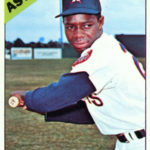 , a twenty-one-year-old, whom Houston picked up from the Cincinnati Reds over the winter as a third baseman. But apparently, he was being converted to the outfield because of his speed, throwing ability, and hitting skills.
, a twenty-one-year-old, whom Houston picked up from the Cincinnati Reds over the winter as a third baseman. But apparently, he was being converted to the outfield because of his speed, throwing ability, and hitting skills.
He, like Morgan, could demonstrate power from somewhere not obvious to the casual observer. He was a little taller than Morgan but more wiry-looking and a right-handed batter. And he had a peculiar habit of always having a toothpick in the corner of his mouth the entire time he was on the field.
The toothpick caught Johnny’s attention because he remembered a good player, back in the sandlot leagues, who always had a peach pit in his mouth while he played. Johnny thought that was pretty cool until one day when that player had to “hit the deck” to avoid a pitch and that big old pit lodged in his throat. He almost lost consciousness before it was dislodged. From then on, Johnny no longer thought it was cool to have anything, other than bubble gum, in your mouth while playing.
In an intra-squad game—on a beautiful, hot, dry, sunny morning in Apache Junction—Johnny and Jimmy both played center field on opposite teams. The first time Jimmy came up to the plate, Johnny could barely see the little guy from deep center. His custom for every batter was to throw a few blades of grass into the air, to see how the wind was blowing, or not. The air was calm, no wind at all, so Johnny moved way in, since Jimmy’s size gave no indication of power.
On the first pitch, Wynn connected on a shot that was hit to deep center field. As Johnny raced back, he initially thought he had a chance to make a great catch (think Willie Mays) since the wall was 455 feet away. But when he reached what he thought would be the right spot, he looked back only to see the rocket fly way over his head, then bounce off the 455-foot sign! Johnny quickly fielded the ball while the speedy Wynn was held to a three-base hit. Had a sudden gust of wind helped with the drive? Johnny tossed the blades of grass again—no wind!
“How could that little guy hit the ball so hard and far?” he asked himself. “That must have been the best hit he had ever gotten in his life.”
Thinking it had been just luck, the next time Jimmy came up to bat, Johnny checked the wind as usual then moved in closer toward the plate. No way lightning was going to strike twice. But this time, on the third pitch, smack! He found himself racing back again, and this time the ball ricocheted even higher off the elevated portion of the 455-foot sign. And again, Johnny held him to a triple. He decided to watch Jimmy Wynn carefully, to learn how a small player could hit the ball like that.
Maybe it was the toothpick! Did that little habit affect his attitude when he came up to bat? Johnny began to wonder about factors, other than physical prowess, that might make a difference in how an individual played.
* * *
When 1963’s spring training ended, Johnny along with Joe Morgan and a host of other players who would later make it to the majors (including “Sonny” Roland Jackson, John Hoffman, Danny Combs, Leon McFadden and Carroll Sembera) were assigned to play for the Modesto Colts, a team in the California League, designated at that time as C-Ball. Houston was the major-league city. Oklahoma City was the AAA team; San Antonio was AA; and the rest were generally considered A ball. Their specific designations were B—Durham, North Carolina; C—Modesto, California; and D—Statesville, North Carolina.
Anxious for a new beginning in Modesto, Johnny started the season by hitting for a good average, clobbering long home runs and playing excellent defense in center field. He was running bases well, stealing and scoring at an impressive clip. He obviously hoped that he could climb the ladder quickly and eventually head back to the “bigs” (via Durham, San Antonio, Oklahoma City, and then Houston). But after his quick start, he hurt his arm and shoulder/upper back while diving for a ball. He made every effort to “gut it out” and still be productive, but his performance went downhill over the course of the next month. He finally told his manager, Dave Philly, about the arm and upper back trouble then rested on the bench until he was capable of resuming play.
But while he was recuperating, he noticed a gradual stiffening of his lower back. One thing led to another, and he ended up going to Houston to have his back looked at by orthopedic experts. After thorough examination, the doctors told him that he apparently had an abnormal condition since birth, but it never affected him adversely until he sustained the shoulder and upper back injury. How was it possible that, at age eighteen, he had a potentially career-ending congenital condition, yet he had played every sport fiercely and competitively over the years and looked like the epitome of health and athleticism?
The Houston doctors must have concluded that the condition wouldn’t necessarily prevent him from playing, so they sent him back to Modesto to finish up the season. However, he did not play well and was in pain much of the time. At the end of the season, he went back to Houston for a more in-depth medical examination. He was headed back to Houston, one way or the other!
While being inactive for a while, his back wasn’t hurting all the time. In fact, when Johnny didn’t have medical appointments, he was at Colt Stadium working out in the hot sun and high humidity before the major-league team showed up for their practices and games. The scouts and coaches who were around to observe him couldn’t help but be impressed with his running speed and fielding dexterity. He seemed to feel great. When he was in “his perfect element,” he ignored negative things and focused on more important issues. Without realizing it, he was again experiencing how factors other than physical prowess might affect a player’s ability and success.
September 27, 1963, was fast approaching, and many minor leaguers had already been called up to the majors after their respective seasons had ended in late August. The Houston Colt .45s were planning an all-rookie team to play against the New York Mets on the first day of the final home stand. Joe Morgan and Sonny Jackson were there after their respective seasons in Durham and Modesto had ended. Johnny knew they were likely to be assigned to play in that game. But once the big day arrived, the Colt .45s lost to the Mets 10–3.
Johnny didn’t attend any of the night games, for he was in Houston solely for medical evaluation and some therapeutic treatments. The only time he went to the field was to work out in the late mornings after his therapy sessions. He was certainly distraught in seeing his former teammates getting the opportunity to play in the big leagues while he was relegated to dealing with his unfavorable injury situation. So it wasn’t just the horrible mosquitoes that kept him from the night games; it was also to try to hold his resentment and discouragement at bay! But since his back was feeling good most of the time, he wondered if rest during the upcoming off-season would aid in his recovery. Johnny never saw Paul Richards, but he had a comforting sense that Paul was watching him. He knew that Paul would have wanted him to play. In fact, after the team’s loss on September 27, a few coaches casually asked Johnny how he felt. He’d always reply in the affirmative, and the inquirer would usually smile in agreement. Then as he was sitting in the doctor’s office on September 28, a message was delivered asking if he would like to play in the last game of the season, on Sunday afternoon, September 29. Without stopping to think of anything else or giving them a chance to recant their offer, he responded with an emphatic, “Yes, I would”!
Next: Chapter 4 – One Glorious Day?
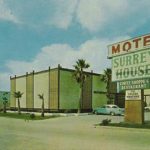 The final game of the 1963 season ended a few hours earlier. We had beaten the New York Mets, 13–4. It was the only game that year that the Colts had scored in double figures. I was particularly happy because I had the good fortune to play in my first Major-League baseball game. I did pretty well. I was up five times. I got three hits (all singles). I got three RBI and scored four times. I also walked twice. I made a few plays in the outfield without an error. It was exciting and fun! I was eighteen years old!
The final game of the 1963 season ended a few hours earlier. We had beaten the New York Mets, 13–4. It was the only game that year that the Colts had scored in double figures. I was particularly happy because I had the good fortune to play in my first Major-League baseball game. I did pretty well. I was up five times. I got three hits (all singles). I got three RBI and scored four times. I also walked twice. I made a few plays in the outfield without an error. It was exciting and fun! I was eighteen years old!